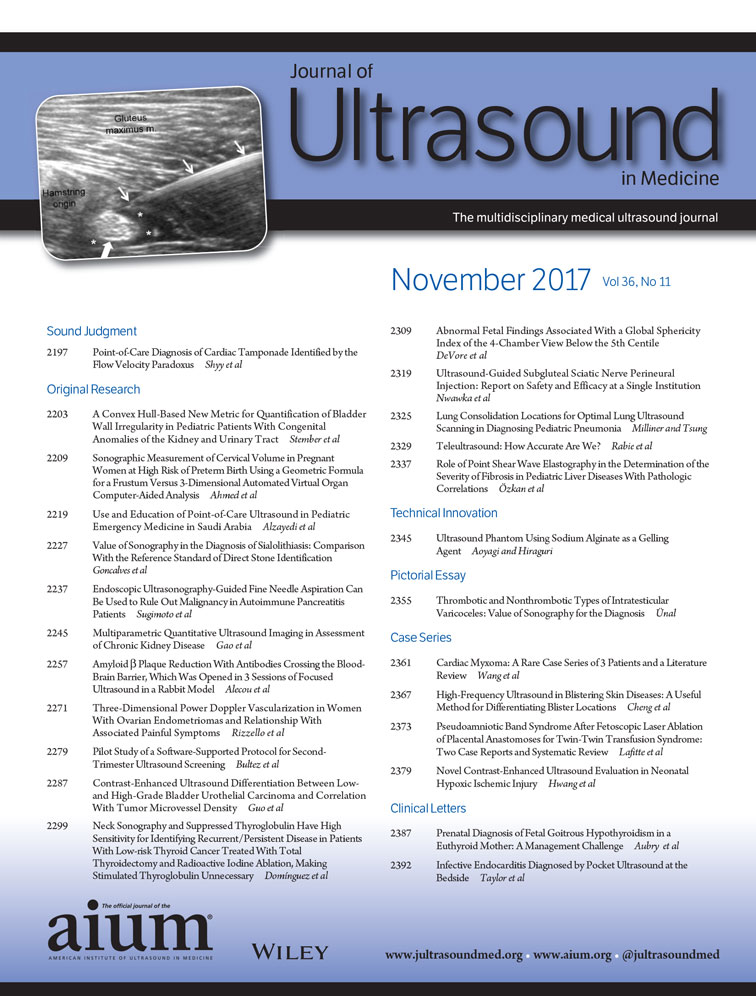Sonographic Measurement of Cervical Volume in Pregnant Women at High Risk of Preterm Birth Using a Geometric Formula for a Frustum Versus 3-Dimensional Automated Virtual Organ Computer-Aided Analysis
Abstract
Objectives
To compare cervical volume measurements by 3-dimensional (3D) sonography using Virtual Organ computer-aided analysis (VOCAL; GE Healthcare, Milwaukee, WI) versus a manual method using a geometric formula for a frustum.
Methods
We included 142 asymptomatic pregnant women at 16 to 24 weeks gestation at high risk for preterm birth. With a Voluson 730 Expert system (GE Healthcare), they underwent 2-dimensional (2D) transvaginal sonographic cervical length measurements and 3D cervical volume acquisition. The stored volumes were processed by VOCAL on a surface tablet. Cervical volume was manually calculated from the 2D images by using the formula V = 1/3 × π × h × (r12 + r22 + r1 × r2), where V represents cervical volume; π was approximated as 3.14159; h, cervical length; r1, radius at the internal os; and r2, radius at the external os.
Results
Cervical volume was lower when obtained manually than by VOCAL, with a coefficient of variation of 30%, a mean difference of 10.1 ± 14.9 cm3 (P < .0001), and a poor interclass correlation coefficient of 0.62 (95% confidence interval [CI], 0.31 to 0.78). Both methods had good reproducibility; however, VOCAL had wider limits of agreement. A positive correlation was found between both methods (r = 0.63; P < .0001). No correlation was found between cervical length by 2D transvaginal ultrasound and cervical volume by the VOCAL technique (r = 0.06; 95% CI, −0.10 to 0.22) or cervical volume by the manual method (r = 0.2; 95% CI, 0.08 to 0.39).
Conclusions
The cervix represents a frustum (truncated cone, r1 is not equal to r2) in shape rather than a cylinder. Both methods are reproducible; VOCAL is less reliable but provides higher values of cervical volume.




